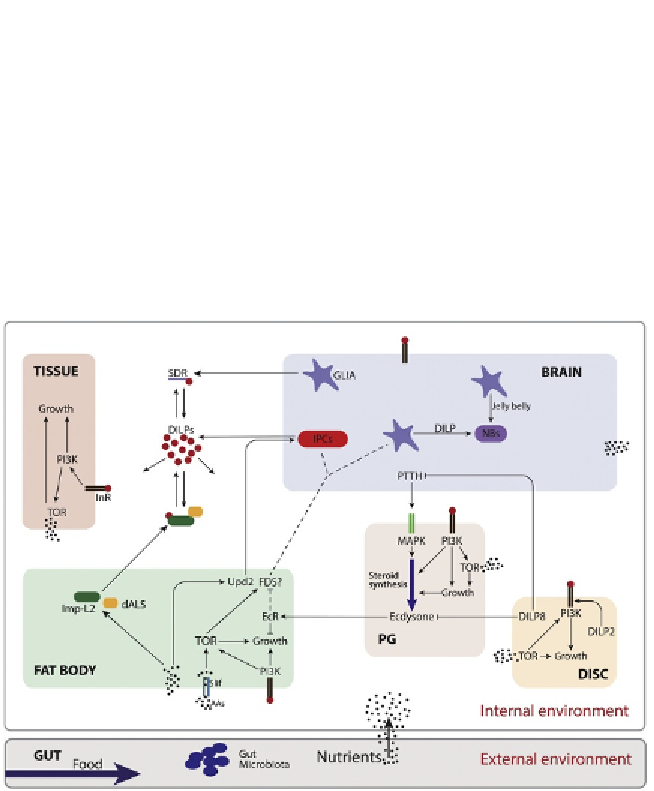Biology Reference
In-Depth Information
the fat body plays a central role in a nutritional checkpoint that requires die-
tary protein and controls growth and developmental progression by regula-
tion of systemic insulin signaling (
Britton & Edgar, 1998; Colombani et al.,
2003; Geminard et al., 2009
). The fat body is the functional equivalent of the
mammalian adipose tissue and liver and also has endocrine functions. In order
to regulate systemic growth, the fat body harbors a nutrient sensor that mon-
itors energy status and conveys that information to the IPCs in the brain to
control the secretion of DILPs (
Fig. 2.3
). Evidence for the existence of a fat
body amino acid sensor comes from several studies showing that fat body
Figure 2.3 Inter-organ signaling coordinates growth and developmental timing.
Uptake of nutrients in the gut from the external environment is influenced by the
gut microbiota. Nutrient sensing in the fat body leads to the production of secreted fac-
tors that regulate the release of local acting and systemic DILPs from the brain affecting
growth in response to nutrition. Activity of circulating DILPs is regulated by the forma-
tion of binding complexes with SDR, Imp-L2, and dALS. The PG controls developmental
timing based on the production of ecdysone which is regulated by developmental cues
(PTTH signaling and disc development; DILP8) and by nutritional inputs via InR/PI3K and
TOR. IPCs, insulin-producing cells; NBs, neuroblasts; PG, prothoracic gland; DILPs,
Drosophila insulin-like peptides; SDR, secreted decoy receptor; Imp-L2, Imaginal mor-
phogenesis protein-Late 2; dALS,
acid-labile unit; FDS, fat body-derived sig-
nal; Upd2, Unpaired 2; PTTH, prothoracicotropic hormone.
Drosophila

